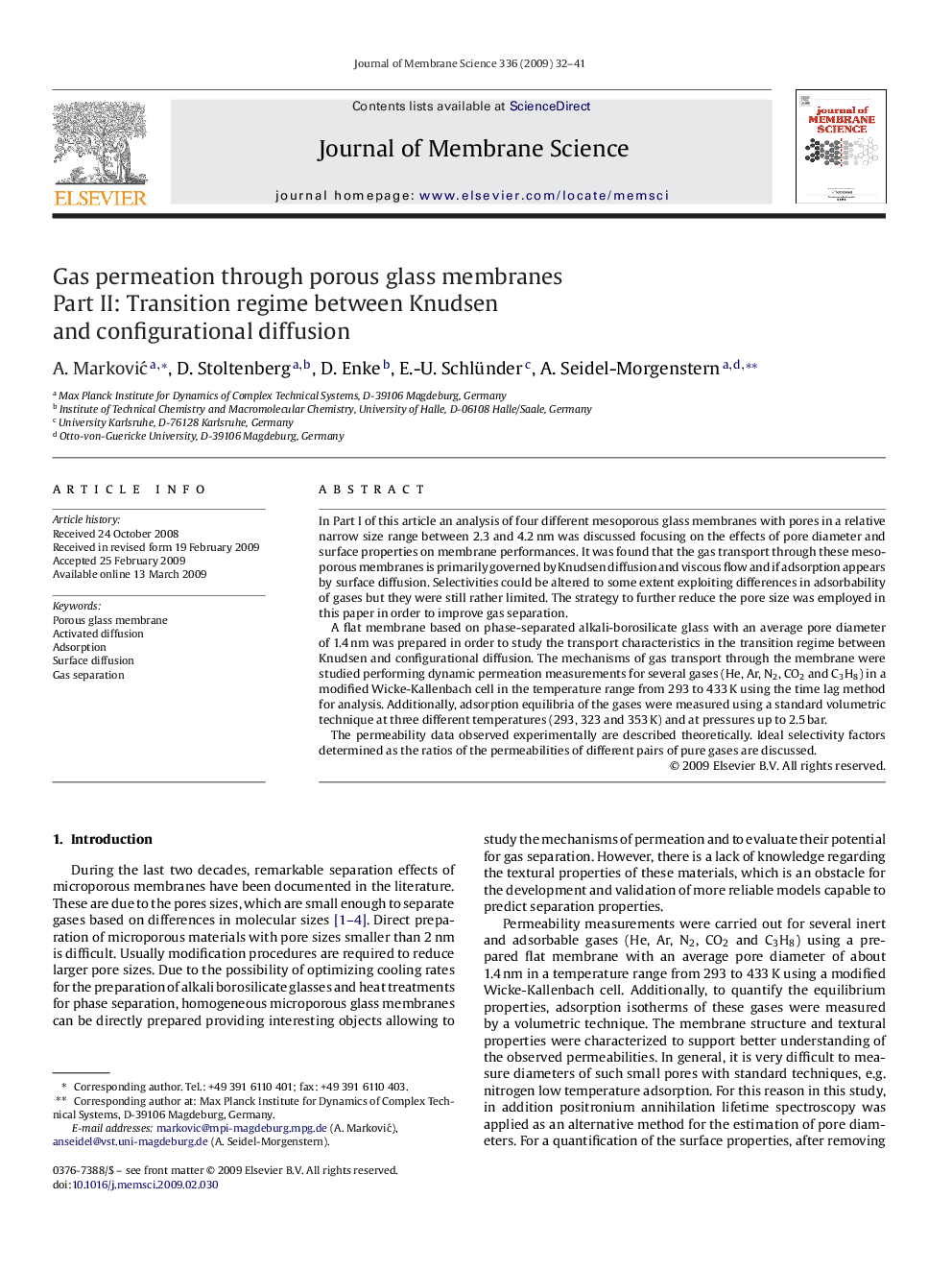| Article ID | Journal | Published Year | Pages | File Type |
|---|---|---|---|---|
| 637209 | Journal of Membrane Science | 2009 | 10 Pages |
In Part I of this article an analysis of four different mesoporous glass membranes with pores in a relative narrow size range between 2.3 and 4.2 nm was discussed focusing on the effects of pore diameter and surface properties on membrane performances. It was found that the gas transport through these mesoporous membranes is primarily governed by Knudsen diffusion and viscous flow and if adsorption appears by surface diffusion. Selectivities could be altered to some extent exploiting differences in adsorbability of gases but they were still rather limited. The strategy to further reduce the pore size was employed in this paper in order to improve gas separation.A flat membrane based on phase-separated alkali-borosilicate glass with an average pore diameter of 1.4 nm was prepared in order to study the transport characteristics in the transition regime between Knudsen and configurational diffusion. The mechanisms of gas transport through the membrane were studied performing dynamic permeation measurements for several gases (He, Ar, N2, CO2 and C3H8) in a modified Wicke-Kallenbach cell in the temperature range from 293 to 433 K using the time lag method for analysis. Additionally, adsorption equilibria of the gases were measured using a standard volumetric technique at three different temperatures (293, 323 and 353 K) and at pressures up to 2.5 bar.The permeability data observed experimentally are described theoretically. Ideal selectivity factors determined as the ratios of the permeabilities of different pairs of pure gases are discussed.
